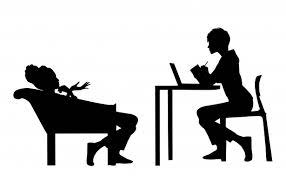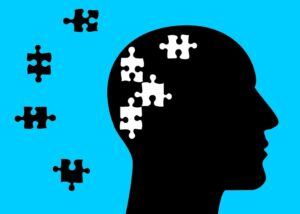Individuals with Sensorimotor Obsessions can find it a distressing condition characterized by repetitive, unwanted, and intrusive thoughts and behaviors. Fortunately, this condition can be monitored through various treatment approaches. This blog post will explore effective treatment options for Sensorimotor Obsessions, including therapies, medications, and self-care.
Contents
What Is Sensorimotor Obsessions?
 Sensorimotor Obsessions or Hyperawareness are a type of obsessive-compulsive disorder (OCD) in which an individual becomes hyperaware of bodily sensations or movements, such as breathing, blinking, or swallowing. This occurs when common and automatic bodily processes become conscious. These obsessions can lead to constant monitoring or controlling of the sensation or movements.
Sensorimotor Obsessions or Hyperawareness are a type of obsessive-compulsive disorder (OCD) in which an individual becomes hyperaware of bodily sensations or movements, such as breathing, blinking, or swallowing. This occurs when common and automatic bodily processes become conscious. These obsessions can lead to constant monitoring or controlling of the sensation or movements.
Sensorimotor obsessions can be of various types:
- Breathing (breathing rate deep or shallow)
- Blinking (more or less)
- Heartbeat (fast or slow)
- Joints popping or creaking
- Posture (often correcting posture)
- Position of arms and legs
- Swallowing
When Is Treatment Needed?
One might need to look for Sensorimotor Obsessions Treatment Options if they experience:
- Frequent and distressing thoughts related to bodily sensations, such as breathing, swallowing, or blinking.
- Repetitive behaviors or rituals, such as checking or seeking reassurance, that is performed in response to these thoughts.
- Difficulty concentrating or completing daily tasks due to the intensity of the thoughts.
- Avoidance or fear of situations/activities that trigger the thoughts.
Therapeutic Treatment Options
Given below are some effective sensorimotor obsessions treatment options that you can consider:
Behavior therapy
Behavior therapy is a type of psychological treatment that focuses on changing specific behaviors through conditioning and reinforcement techniques. It aims to help individuals overcome maladaptive behaviors and improve their overall functioning. It also involves changing the behavior of self as well as the surroundings of the patient so that triggers can be avoided.
Cognitive-behavioral therapy
 Cognitive-behavioral therapy (CBT), as the name suggests (cognitive meaning brain-related), is a psychological treatment that focuses on altering the brain’s functioning behavior. It aims to change negative thought patterns and behaviors by addressing the underlying beliefs and assumptions that drive them. Overall, a therapist will analyze the medical history, educate the patient about his/her obsessions and help gradually minimize the symptoms.
Cognitive-behavioral therapy (CBT), as the name suggests (cognitive meaning brain-related), is a psychological treatment that focuses on altering the brain’s functioning behavior. It aims to change negative thought patterns and behaviors by addressing the underlying beliefs and assumptions that drive them. Overall, a therapist will analyze the medical history, educate the patient about his/her obsessions and help gradually minimize the symptoms.
Acceptance and Commitment therapy
Acceptance and commitment therapy (ACT) is a type of CBT that aims to increase psychological flexibility and improve well-being. ACT focuses on mindfulness, acceptance, and values-based living to help individuals better manage difficult thoughts and emotions. For Sensorimotor Obsessions, ACT can help the patient to accept the obsessive behavior and help him/her to take measures to control the triggers and symptoms.
Exposure & Response Prevention therapy
Exposure and response prevention (ERP) is a specific CBT technique used to treat anxiety disorders, including hyperawareness. ERP involves gradual exposure to anxiety-provoking situations while preventing the individual from performing compulsive behaviors in response. This technique helps reduce anxiety and allows the individual to develop new and more adaptive behaviors. For sensorimotor obsessions, mainly Response Prevention is opted to avoid symptoms.
Mindfulness-based therapy
 Mindfulness-Based Cognitive Behavioral Therapy (MBCT) is a form of CBT that combines mindfulness techniques with traditional CBT strategies. It emphasizes being present at the moment and accepting difficult thoughts and feelings without judgment. Moreover, this therapy helps individuals become aware of their thought patterns and develop more adaptive responses.
Mindfulness-Based Cognitive Behavioral Therapy (MBCT) is a form of CBT that combines mindfulness techniques with traditional CBT strategies. It emphasizes being present at the moment and accepting difficult thoughts and feelings without judgment. Moreover, this therapy helps individuals become aware of their thought patterns and develop more adaptive responses.
Medications Treatment Options
There is no specific medication approved for the treatment of Sensorimotor OCD. However, medication may be prescribed in some cases to alleviate associated symptoms such as anxiety or depression. Here are some common medications that may be prescribed:
- Selective serotonin reuptake inhibitors (SSRIs): These are antidepressants prescribed to treat anxiety disorders and help alleviate symptoms of anxiety and depression associated with Sensorimotor OCD. However, there are common side effects like Nausea, tremors (shaking), Nervousness, Problems sleeping, or Sweating.
- Antipsychotics: These medications may be prescribed in some cases to reduce intrusive thoughts’ severity or manage symptoms such as disordered thinking. Common Side Effects are Dry mouth, Constipation, Blurred vision, Drowsiness, or Low blood pressure.
- Benzodiazepines: These medications may be prescribed on a short-term basis to alleviate symptoms of anxiety, but they are generally not recommended for long-term use due to the risk of dependence.
- The FDA has approved Prozac (fluoxetine) as the only medication for the treatment of depression in children. In addition to this, Prozac (fluoxetine) and Lexapro (escitalopram) are the only medications approved for the treatment of depression in teens.
However, these medications must be taken only under the supervision of a psychiatrist or doctor.
Self-Care Treatment
If you want to tackle your sensorimotor obsession more effectively, here are steps you can take to reduce your symptoms:
- Seek professional help: A mental health professional can provide a diagnosis and create a personalized treatment plan, which may include therapy or medication.
- Practice mindfulness and relaxation techniques: These can help you manage your anxiety and reduce your overall stress levels. regular yoga or meditation can help to lower symptoms.
- Stay active: Regular exercise can help boost your mood and reduce symptoms of anxiety and depression. You can also engage in hobbies to avoid obsessions and compulsive thoughts.
- Maintain a healthy lifestyle: Eating a balanced diet, getting enough sleep, and avoiding drugs and alcohol can help improve your overall well-being.
- Educate yourself: Learning more about sensorimotor obsessions can help you understand your condition. This will help to be self-aware to control the worst scenario.
Is Sensorimotor OCD Treatable?
 Yes, sensorimotor obsessions can be cured. With proper support and treatment, one can identify symptoms and plan treatment. It usually takes 8-12 therapy sessions for mild to moderate cases. However, the effectiveness of treatment may vary for each individual. Some may need a combination of medications as well as therapy. An experienced therapist can suggest you the plan for your treatment. But make sure that, taking self-initiatives to overcome the obsessions can speed up your recovery.
Yes, sensorimotor obsessions can be cured. With proper support and treatment, one can identify symptoms and plan treatment. It usually takes 8-12 therapy sessions for mild to moderate cases. However, the effectiveness of treatment may vary for each individual. Some may need a combination of medications as well as therapy. An experienced therapist can suggest you the plan for your treatment. But make sure that, taking self-initiatives to overcome the obsessions can speed up your recovery.
Conclusion
Sensorimotor obsessions can be a challenging condition to manage, but there are effective treatment options available. Cognitive-behavioral therapy (CBT) techniques, such as exposure and response prevention, and mindfulness training, effectively reduce symptom severity and improve the overall quality of life. Nevertheless, it’s important to seek professional help and develop a personalized treatment plan to effectively manage this condition.
For more information and guidance, please contact MantraCare. OCD is a mental health disorder characterized by obsessions and compulsions. If you have any queries regarding Online OCD Counseling experienced therapists at MantraCare can help: Book a trial OCD therapy session


